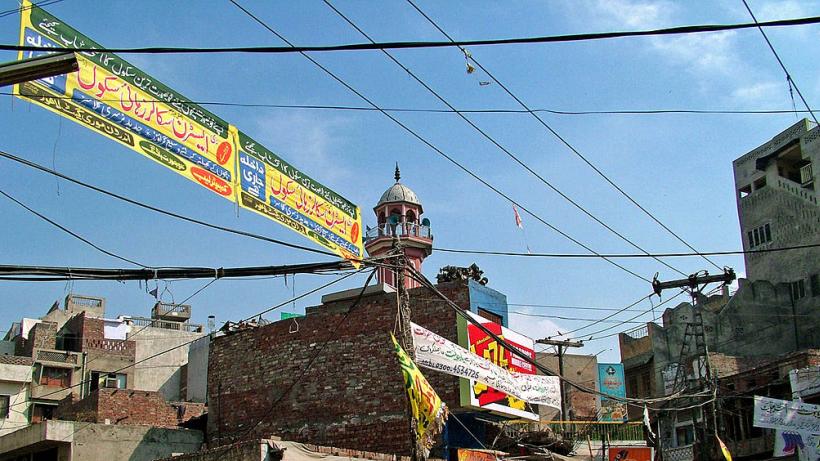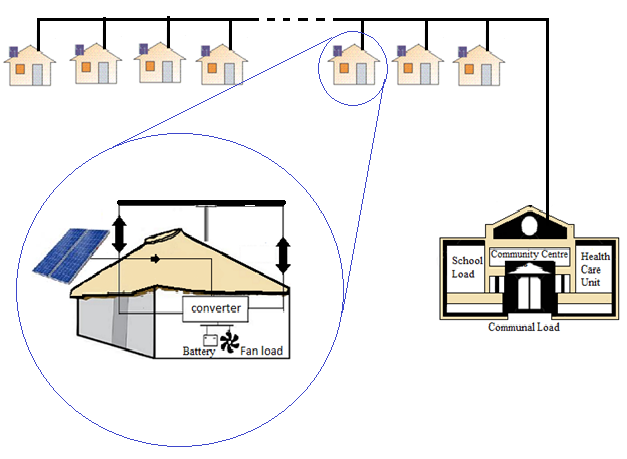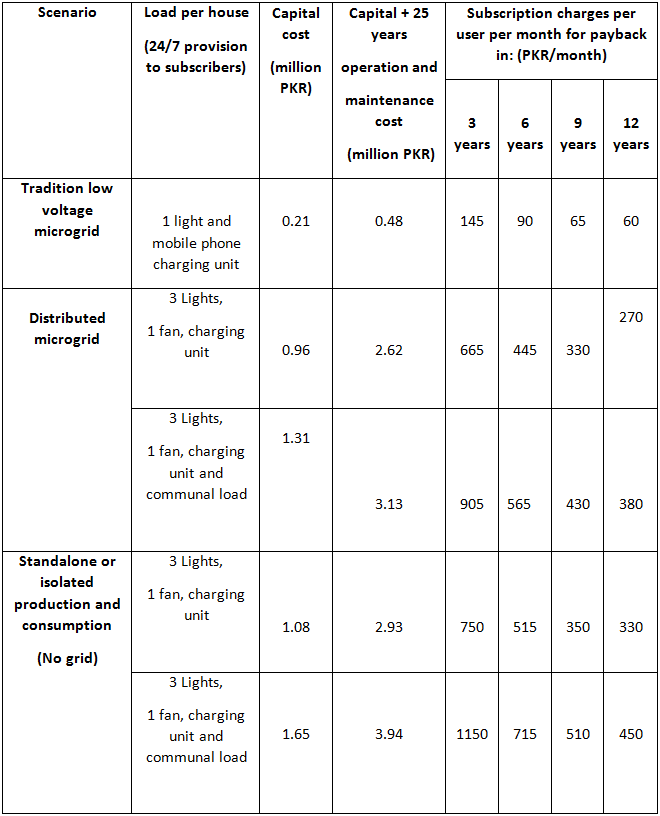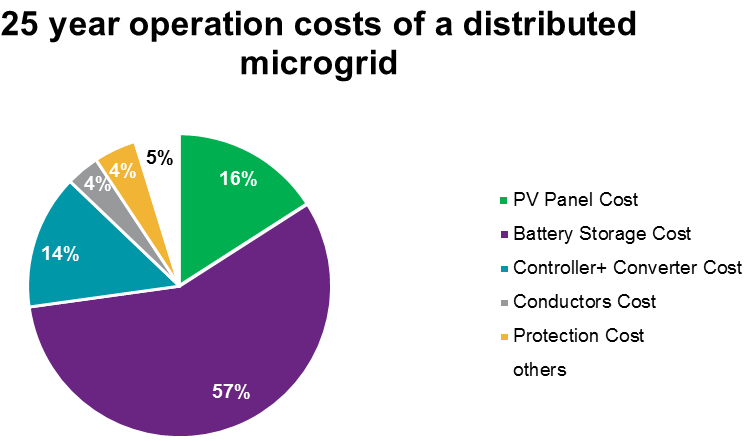
Why are there no microgrids in Pakistan?
Solar microgrids, with higher voltage distribution and decentralised generation, present a viable alternative to grid electricity in Pakistan. What’s more, demand exists for services beyond basic electrification. However, there are hurdles for microgrid deployment in the country. Namely, sophisticated demand, technological barriers, and legal constraints. An International Growth Centre (IGC) project explores these hurdles, in an effort to design and cost a scalable microgrid system.
Access to electricity in Pakistan
According to the International Energy Agency (IEA), an estimated 20 million Pakistanis live without access to electricity. Additionally, a decade long energy crisis has left a further 75 million without access to electricity for more than half a day, daily. Households in these “off-grid” and “bad-grid” areas rely on alternative sources of electricity; typically, diesel generation or standalone solar systems.
The solar micro-grid
A more recent innovation is the “solar micro-grid.” Relying on a solar generation and local distribution through cables, these solutions have been employed to provide basic electrification (light and mobile charging) to households throughout the developing world. Such systems require higher initial setup costs compared to stand-alone units, but have significantly lower running costs, yielding cheaper electricity in the long run.
In Pakistan, solar microgrids have been conspicuous by their absence. In the vacuum of power left by the energy crisis, alternative solutions that have been offered are mostly conventional. For areas characterised as bad grid, battery powered Uninterruptible Power Supply (UPS) systems and small generators are the most popular. Similarly, in off-grid areas, there is a reliance on fossil fuels, or in some cases, standalone solar systems. These systems allow consumers to reap some of the benefits of electrification with the higher levelised cost of electricity. So why have we not seen the rollout of solar microgrids in Pakistan?
The project
Through our project, we aim to design a parametric solution for Direct Current (DC) microgrids that fits the demands of the Pakistani market. In our research, we have been able to identify the unique constraints imposed by the Pakistani market, which have prevented microgrids from being used in the country. We have also been encouraged by technological innovations and policy conversations that indicate that these constraints are surmountable.
What is a microgrid and why does it matter?
A microgrid generally consists of an independent electricity distribution system with its own generation, storage and demand management system. Traditional low voltage DC microgrids have been deployed in various countries (e.g Mera Gao Power in India) to provide high quality lighting and/or mobile charging to residents. These systems rely on central generation and use low voltage direct current to transmit electricity to subscribers.
Higher voltage and decentralised generation
An issue with their current implementations is the lack of scalability, both in terms of the number of households each system can cater to, as well as their inability to provide sufficient power beyond basic lighting or mobile charging. Our proposed decentralised microgrid, relies on higher voltage distribution and decentralised generation. Such a system has the inherent tendency of resource sharing to extract benefits of usage diversity, lowering wastage. The extra power from each household may also be aggregated to run a community load, such as a water filtration plant, medical equipment of a local hospital, or the computing load of a school. The schematic visuals of the proposed microgrid are shown in figure 1.
Figure 1 Schematic diagram of a decentralised solar microgrid.

Cost
Table 1 presents the simulated costs of such a system and compares them to alternative implementations. Other than the novel aspects of efficient power processing (power electronics), all other parts are readily available and can be bought off the shelf. Prices used are standard wholesaler’s rates, correct for the month of December 2016.
Table 1: Estimated cost of competing solar generation implementations for a system of 40 households (average market costs for December 2016).[1]

Our calculations show that solar power, in particular decentralised microgrids, present a viable alternative to grid electricity even for loads beyond high quality light. For nominal fixed monthly prices, consumers can be provided with multiple lights and a fan. Finally, load sharing allows the system to even provide electricity for a communal load for a negligible increase in price.
Key hurdles to microgrid deployment
the question remains, why have we not seen microgrids pop up throughout the country? Through the current project, we have identified multiple hurdles for microgrid deployment. They fall broadly under three categories: sophisticated demand, technological barriers and legal constraints. However, we have also found that these hurdles are surmountable, given the current technological and policy environment.
1) Higher sophistication of demand
Along with the technological aspect, the project also aimed to identify the demand for such services in Pakistan, by conducting censuses of possible pilot settlements for future technological interventions. While only half the pre-pilot locations have been surveyed (only one off-grid community has been surveyed), we have found that in general, demand for electrification is for services beyond basic electrification.
While we have evidence of demand for basic electrification in off-grid areas, by and large households demand a fan as a minimum requirement for electrification services in bad grid areas (the settlement in Multan being an exception, though it faced a minimum of 16hrs of load shedding). A fan was a binding minimum in most bad-grid areas, where the entry threshold was for services that matched current solutions (e.g. UPS) and undercut them on cost. Table 2 provides summary statistics for demand of different levels of services reported in our pre-pilot censuses. These findings suggest a mismatch between low-cost low-power technology and the demand for electrification in the Pakistani context, which may be one reason for their absence.
Table 2: Average reported willingness to pay for packages (standard deviation in parenthesis). [2]

2) Technological barriers
Current microgrid technologies deployed throughout the world rely on low voltage DC distribution. At lower voltages, there are significant line losses that limit both the deployment radius and maximum power provision of the system. It is for this reason that most microgrids offer only basic electrification.
As part of our ongoing project, our team at LUMS is developing power electronic solutions to allow for decentralised generation and distribution at higher voltages allowing for higher loads, as well as load sharing and scalability. Simulations show that such a system would be able to provide true 24/7 provision of three lights, a fan and charging station to a network of 40 houses at a levelised cost of around Rs.13.2 per kWh.
As mentioned, gains from load sharing reduce redundancies in production and allow for a reduction of cost of around 15% when compared to standalone systems over the lifetime of the system (see Table 1). Furthermore, through load sharing, such a system would allow for the running of a communal load, such as a water pump, at minimal additional cost. As can be observed from Table 2, there is a significant demand for such services, with the reported marginal demand being well beyond the marginal cost in a decentralised microgrid setup.
A major component to the cost of any solar system, is the cost of storage. Batteries are expensive, have short lifespans, and are inefficient. However, recent developments in battery technology suggest that the overall cost of such a system is likely to decrease in the future. In case of a decentralised microgrid, over a lifespan of 25 years, batteries constitute more than half the cost of the system (Figure 2) at current market prices.
Figure 2: Life time operation cost break-down of a distributed microgrid

3) Legal Constraints
While we have found that current solutions do not directly meet the demands of Pakistani consumers, the legality, or lack thereof, of distributed power is the most binding constraint in the Pakistani context. This may explain why no entrepreneur or social enterprise has chosen microgrids as their solution of choice. A review of the current legal framework shows that it is illegal for private parties to sell electricity to private individuals. Exceptions to the law exist, but do not apply to a typical microgrid setup.
During our project, we have met with relevant stakeholders and found there to be a general agreement in policy circles that these laws need to be eased. In particular, there is some movement towards allowing private production and distribution through renewable energy for up to 1MW.
Going forward
While research on the project in ongoing, these positive results highlight to us that the environment is ripe for innovations such as decentralised microgrids to help improve the energy landscape in the country. Given conducive laws, and technology that can meet the demands of the Pakistani consumer, Pakistan can begin solving its energy puzzle, using low cost localised solutions.
[1] Detailed calculations are available upon request. Preliminary technical findings: http://ieeexplore.ieee.org/xpls/icp.jsp?arnumber=7462817
[2] Notes: 1) Surveys are still underway. 2) These are simply “reported” figures. Survey elicitations are not incentive compatible, and the data shows high dispersion, highlighting the importance of rolling out on the ground interventions.

